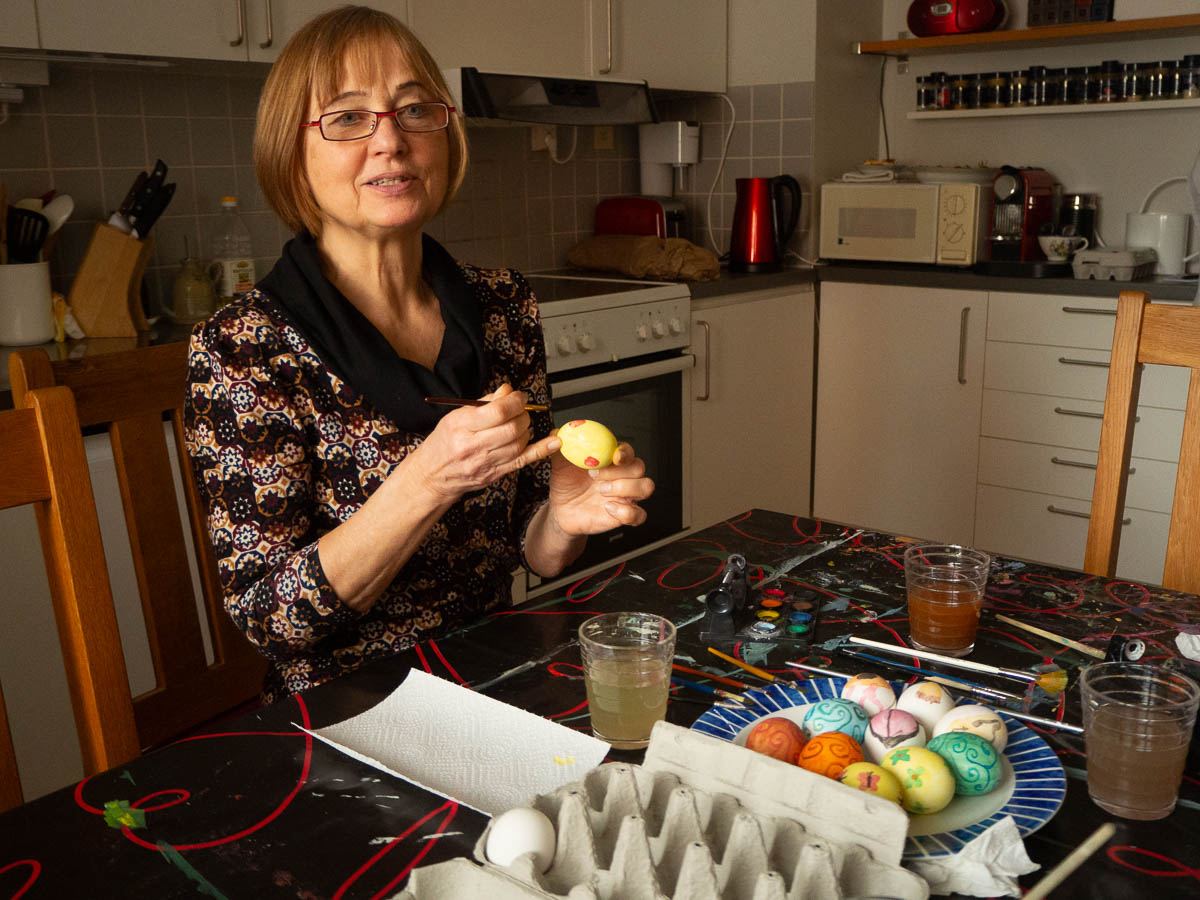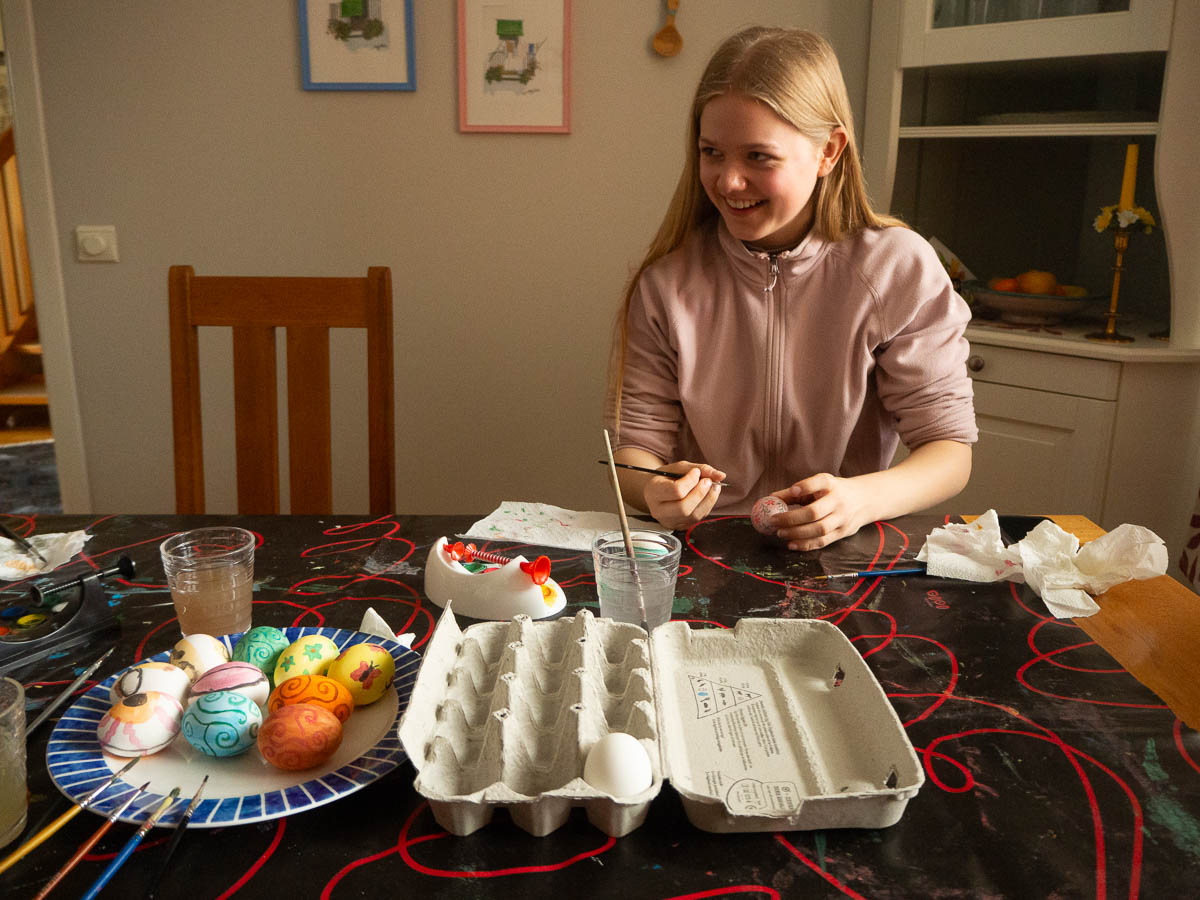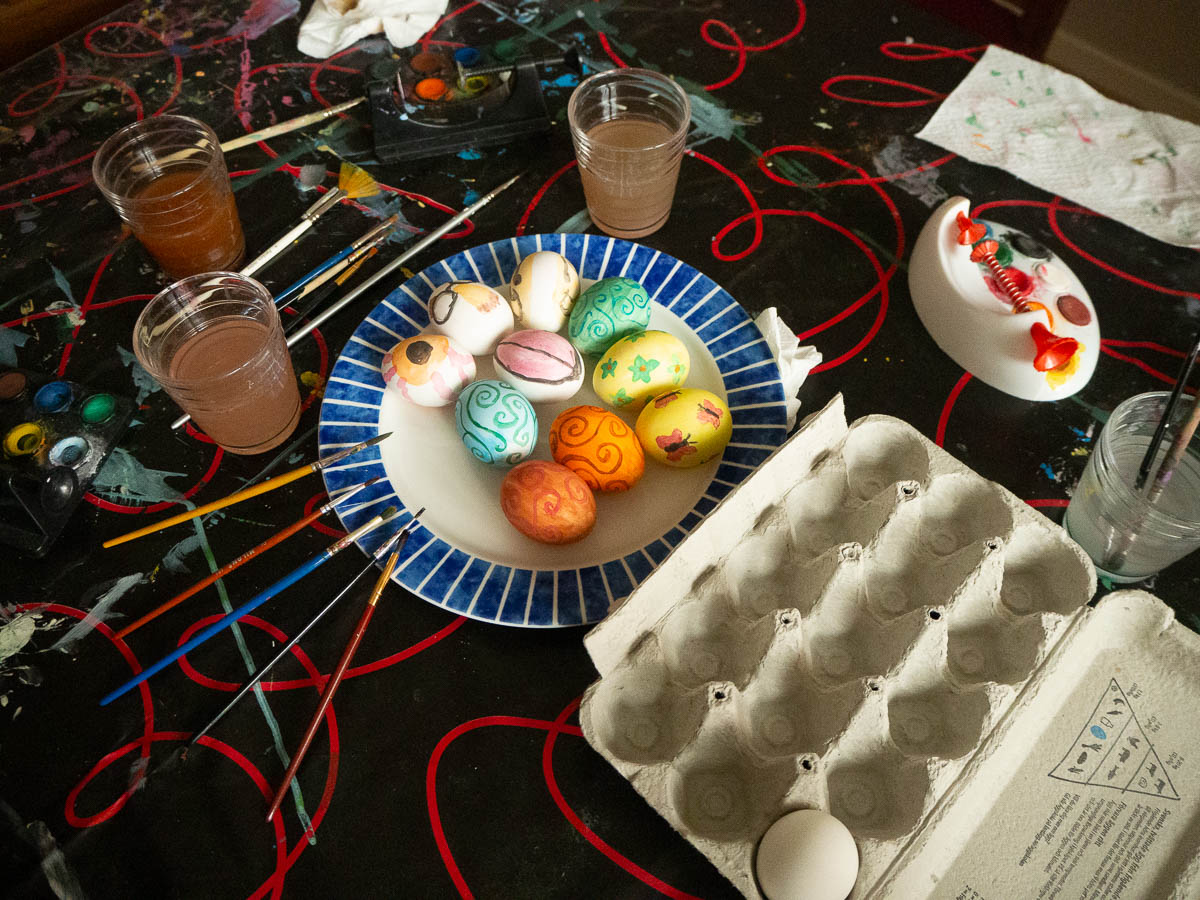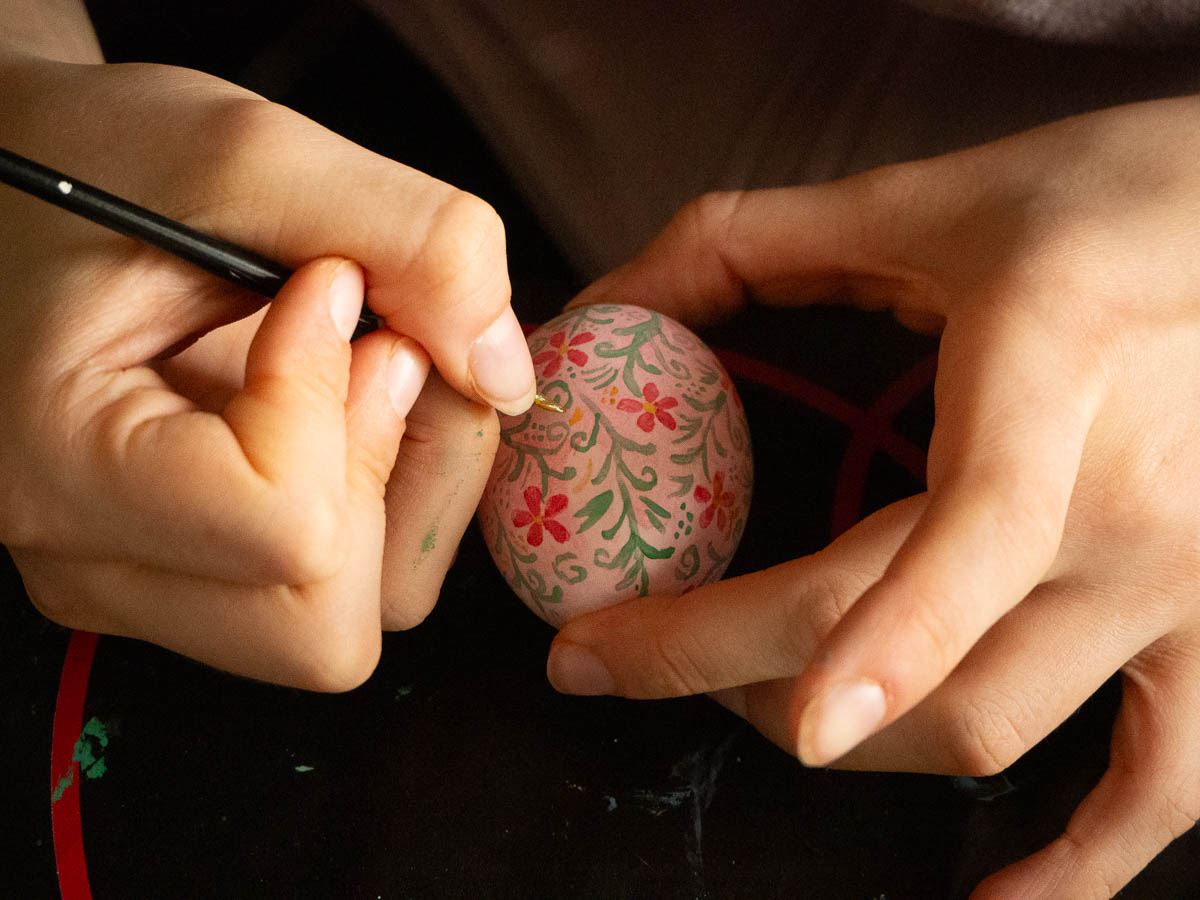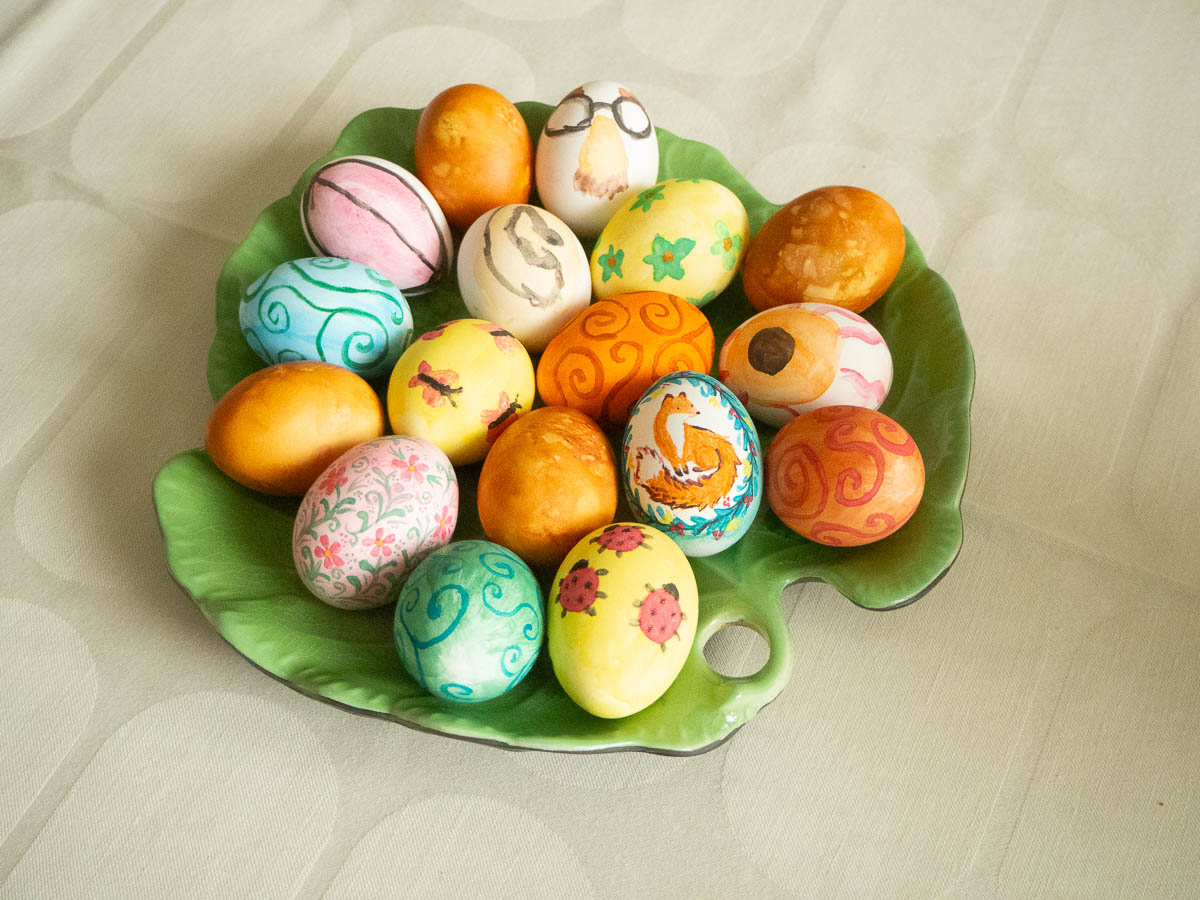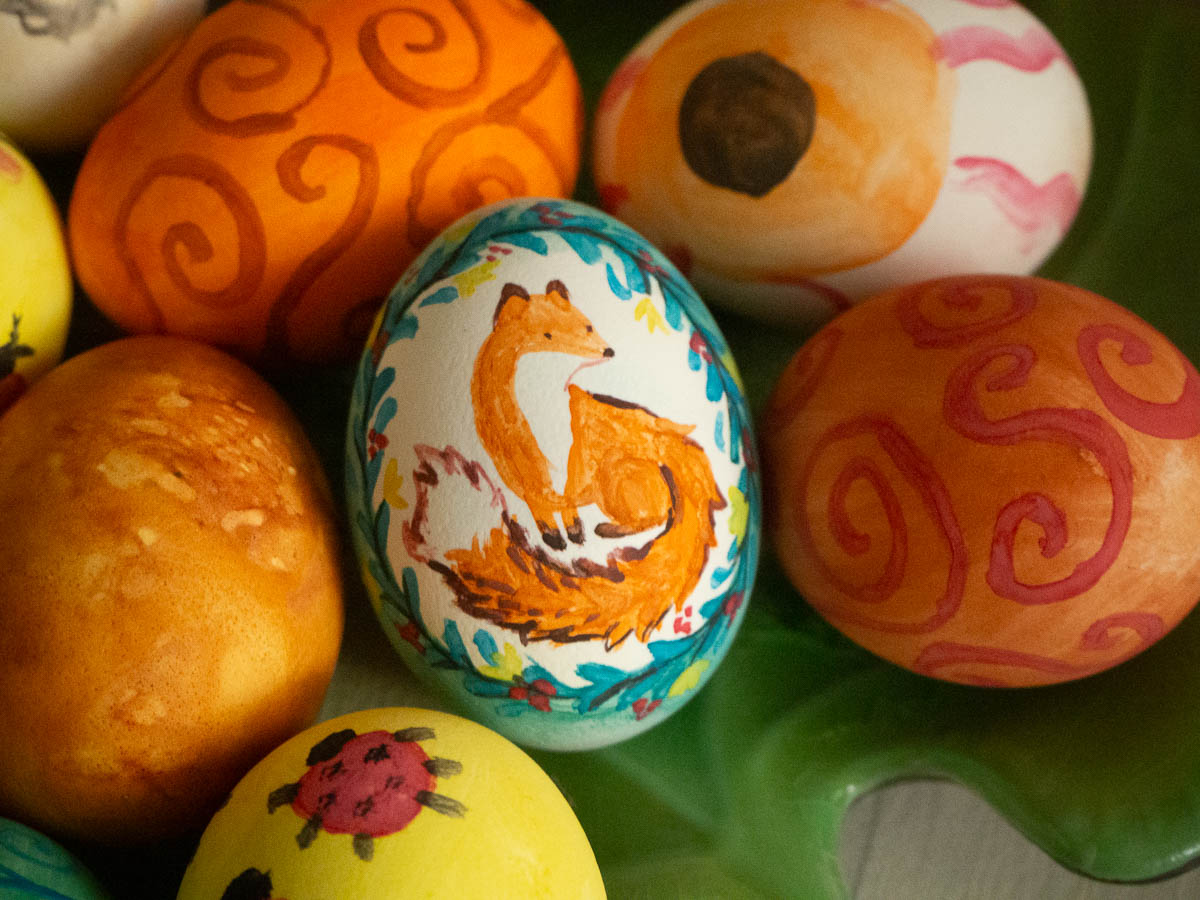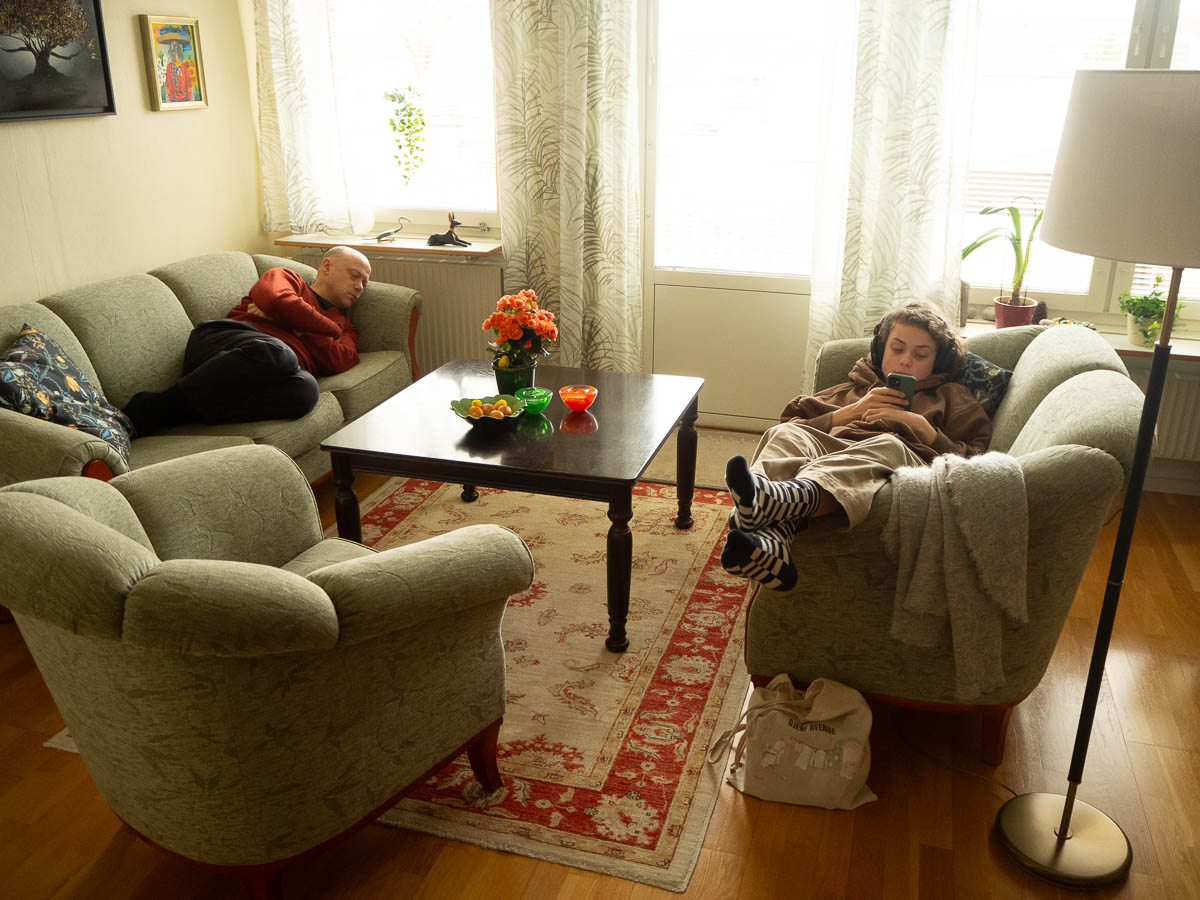Staying at Duottar for another night. Today was planned as a slack day, in case we needed to adjust our route or timing due to the weather – or to be used for a day trip. In the end it was a bit of both. The day started out very windy, continuing on from yesterday, so we mostly stayed in the huts until lunchtime.
In the middle of the day we had a couple of fine hours of beautiful sunshine, and went out on a small circuit on the nearby lake. On the other side of the lake we took off our skis and climbed to the top of the (very small) peak to get some views.

It was rather satisfying to get some good glide going. Swish, swoosh, across a flat lake, with the wind at our backs and the sun brilliant above us.

More dark clouds were piling up when we were turning back, and the wind picked up again soon after, so our outing remained short.

The rest of the day we just puttered around our huts. I think many in the group appreciated the rest. There isn’t much space nor comfortable furniture in the huts. You can lounge in your bed, or on one of the small, hard chairs.

I had packed some knitting, given the more generous “luggage allowance” with the pulks. I finished a pair of socks this morning and wound the yarn for the next pair. A ball of sock yarn weighs 100 g, so the two didn’t make my bag much heavier.

At one point we took the time to dig out another stall in the outhouse. When we got here, only one of the stalls was clear of snow. Two others were full of snow inside, and the fourth had a large drift in front of the door. But we were getting low on toilet paper in the one that we were using, so it was worth digging out a second one.

When there’s nothing else to do, there’s almost always water to melt and boil. It’s the first thing we do in the morning, and likewise the first thing we start when we get into a hut in the afternoon. There’s almost always two pots of water on the stove and a bucket of snow next to it.
Had I been on my own, I’d most likely not have bothered with the boiling. Fresh snow, freshly melted, is good enough for me. But I understand that the guides feel like they need to be more responsible with the group’s hygiene.
During this trip I’ve learned that there is technique and tricks to melting snow for drinking water. Sure, you can just shovel snow in a pot and put it on a stove, but there are ways be efficient about it.
Firstly and most importantly, don’t start with snow in an empty pot – you want some water at the bottom. Otherwise the first snow to melt will immediately boil and evaporate, which is a waste. So you prime the pot with the last dregs from your thermos.
Secondly, the first batch of ready, boiled water goes not in the thermos but in ordinary bottles, which you then put in the bucket of snow waiting to be melted next. This way you start warming up the snow while also cooling your drinking water. The thermoses you fill last.
And, of course, don’t leave any of your leftover water in the kettle, like some fool had done, because by the time the next guests get there it will be a solid chunk of ice, spiced with dead flies, which you can’t even pour out because it’s larger than the opening of the kettle.

On any normal trip we’d also spend a fair bit of time cooking. This time we had packed, frozen meals for all dinners, and the guides took care of breakfast porridge. I’ve never eaten as well on a hut-to-hut tour, with as little work.









